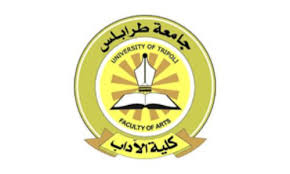النفايات الطبية وعلاقتها بصحة الانسان والبيئة
الكلمات المفتاحية:
النفايات الطبية، الانسان والبيئةالملخص
ان التعامل مع النفايات الطبية بصفة عامة امر بالغ التعقيد، والاهمال في ذلك يعتبر باهظ الثمن ولكن عند تصنيف المخلفات نجد ان النفايات الطبية ذات مستوى عالي في الخطورة ويتعامل معها بصفة منفردة ولها قوانينها الخاصة في التعامل وعمال نظافة العاديين لا يستطيعون التعامل معها وهناك قوانين تنظم العمل في هذا المجال. الا ان ما تمر به البلاد من حالة التسيب وعدم معرفة ما سيحدث زاد من الامر سوء فالنمو المتزايد لأعداد العيادات الخاصة والصيدليات وجميع المرافق التي في ظاهرها صحي لعلاج الناس ولكن ماتخلفه كارثة عليهم وهنا نجد ان المشكلة ليس في نوعية المخلفات الطبية والتفاعلات التي تحدث لها و ان المشكلة هي الزيادة الغير معهودة في العدد حيث اصبحت لغرض تجاري ربحي وليس لعلاج الناس ولم تؤخذ المعايير اللازمة لذلك حيث اصبحت العيادات تلاصق المختبر والصيدلية و تلاصق محطة الوقود وما الى ذلك. ونحن في هذا البحث اخذنا بلدية جنزور كمنطقة للدراسة وتم التعريف بماهية المخلفات الطبية وتصنيفها ومن ثم تأثيرها على الصحة العامة و عرض اعداد العيادات والصيدليات في المنطقة وكيفية التعامل مع هذه النفايات ورغم انقسام المسؤولين بالتعامل مع الشركات المختصة في هذا المجال الا ان وعي الناس لا يزال في التعامل مع هذه المخلفات و في النتائج والتوصيات تم الاشارة الى ذلك.
Handling medical waste is inherently complex, and negligence in this area can be extremely costly. However, when it comes to waste classification, medical waste is categorized as highly dangerous and is managed separately with its own regulations. Ordinary cleaning staff are not equipped to handle it, and specific laws govern its management. Unfortunately, the current state of mismanagement and ignorance about the consequences has worsened the situation. The rapid increase in private clinics, pharmacies, and other health-related facilities—designed to treat people but leaving behind significant waste—has exacerbated the problem.
The issue is not just the type of medical waste and the reactions it can cause, but rather the unprecedented increase in its quantity. The growth has become commercial rather than solely for medical treatment, with inadequate standards being applied. Clinics are often located next to laboratories, pharmacies, and even fuel stations, creating additional risks. In this study, we focused on the Genzour Municipality as the area of investigation. We defined what constitutes medical waste and classified it, then examined its impact on public health. We presented the number of clinics and pharmacies in the area and discussed the management of this waste. Despite the division among officials in handling specialized waste management companies, public awareness remains low. The results and recommendations section highlights these issues.

